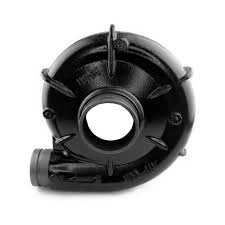Mobile:+86-311-808-126-83
Email:info@ydcastings.com
aluminum alloy casting
Understanding Aluminum Alloy Casting A Comprehensive Overview
Aluminum alloy casting is a pivotal manufacturing process utilized across various industries, including automotive, aerospace, and consumer goods. This method involves pouring molten aluminum alloy into a mold to create a desired shape and size. Because of its versatile properties, aluminum alloy casting has become a favored option for producing complex components that demand both strength and lightweight characteristics.
Properties of Aluminum Alloys
Aluminum alloys are primarily classified into two categories wrought and cast. Wrought alloys are mechanically worked into various shapes, while cast alloys are melted and poured into molds. The properties of aluminum make it an ideal choice for casting. These properties include low density, high corrosion resistance, excellent thermal and electrical conductivity, and good ductility. Furthermore, aluminum alloys can be engineered to enhance specific characteristics, such as strength, hardness, and thermal stability, by altering their composition and thermal treatment.
Casting Processes
Several casting processes can be employed for aluminum alloys, including sand casting, die casting, and investment casting. Each method has its advantages and applications.
1. Sand Casting This is one of the oldest and most versatile casting techniques. In sand casting, a mold is created using sand mixed with a binder. Once the mold is formed, molten aluminum is poured in, and after cooling, the sand is removed, revealing the cast part. Sand casting is particularly useful for producing large parts and allows for intricate designs.
2. Die Casting Die casting involves forcing molten aluminum under high pressure into a steel mold. This process enables the production of complex shapes with excellent surface finish and dimensional accuracy. Die casting is ideal for high-volume production runs, making it a popular choice in the automotive and appliances industries.
3. Investment Casting Also known as lost-wax casting, this process is used for highly intricate designs. A wax pattern is coated in a ceramic shell, which is then heated to remove the wax and harden the shell. Molten aluminum is poured into the shell, resulting in a precise replica of the original pattern. Investment casting is often used for components requiring intricate detailing and high tolerances.
Advantages of Aluminum Alloy Casting
aluminum alloy casting

1. Weight Reduction One of the primary benefits of aluminum alloy casting is the ability to produce lightweight components. This characteristic is especially valuable in industries such as aerospace and automotive, where reducing weight can lead to fuel savings and improved performance.
2. Corrosion Resistance Aluminum inherently offers good resistance to corrosion, making cast aluminum components suitable for outdoor and high-moisture environments. This property extends the lifespan of products and reduces maintenance costs.
3. Versatility The different casting processes available allow aluminum alloys to be used in various applications, from intricate designs in jewelry to robust components in machinery.
4. Cost-effectiveness While the initial setup for some casting processes like die casting can be high, the cost per unit decreases significantly for large production runs. Furthermore, aluminum's recyclability adds to its overall cost-effectiveness.
Applications of Aluminum Alloy Casting
The applications of aluminum alloy casting are extensive. In the automotive sector, components such as engine blocks, transmission cases, and wheels are often cast from aluminum alloys to balance strength and weight. In aerospace, parts like brackets, housings, and structural components benefit from aluminum’s low weight and high strength. Other industries, including electronics, marine, and consumer products, also utilize aluminum casting for various components.
Future Trends
As industries continue to seek stronger, lighter, and more efficient materials, the demand for aluminum alloy casting is expected to rise. Innovations in casting technologies, such as 3D printing molds and advancements in alloy composition, are on the horizon. These developments promise to enhance precision, reduce waste, and create new possibilities for design.
In conclusion, aluminum alloy casting is a crucial manufacturing technique with vast applications due to its unique properties and versatility. As technology progresses, this process will continue to play an essential role in developing advanced materials and components across multiple industries.
-
Why Should You Invest in Superior Pump Castings for Your Equipment?NewsJun.09,2025
-
Unlock Performance Potential with Stainless Impellers and Aluminum End CapsNewsJun.09,2025
-
Revolutionize Your Machinery with Superior Cast Iron and Aluminum ComponentsNewsJun.09,2025
-
Revolutionize Fluid Dynamics with Premium Pump ComponentsNewsJun.09,2025
-
Optimizing Industrial Systems with Essential Valve ComponentsNewsJun.09,2025
-
Elevate Grid Efficiency with High-Precision Power CastingsNewsJun.09,2025











